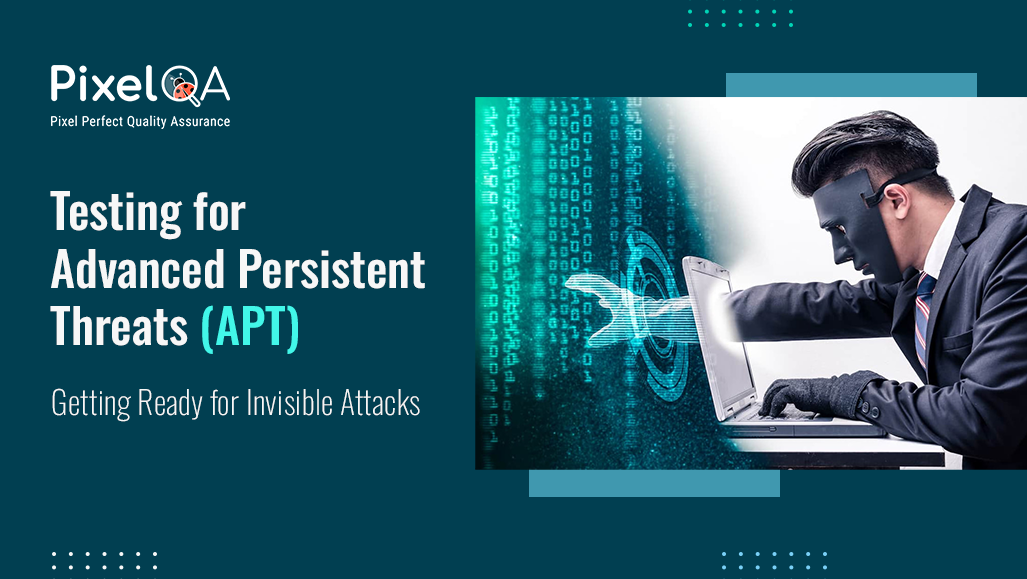
Cyberattacks have increased in frequency, complexity, and risk in today's digital environment. Advanced Persistent hazards (APTs) are among the most dangerous hazards that companies must contend with. These attacks are not your typical ones; they are targeted, covert, and frequently supported by highly trained actors who may go months without being noticed.
APT Simulation Testing is being used by many governments and companies to defend against such advanced threats. This blog will describe APTs, the value of APT simulation, and how businesses may utilize it to get ready for covert cyberattacks.
Table of Content
- Why Are APTs Such a Risk?
- Examples of Real-World APT Attacks
- Explain APT Simulation Testing
- Why is APT Simulation Important?
- How is an APT Simulation Conducted?
- Key Tools Used in APT Simulation
- Challenges in APT Simulation Testing
- Best Practices for Running APT Simulations
- Conclusion
Why Are APTs Such a Risk?
Some cyberthreats appear, cause chaos, and then go. However, APTs, or Advanced Persistent Threats, are far more deliberate and patient. These are persistent attacks in which hackers covertly access a company's systems and remain operational for a long time, frequently without anybody noticing.
APT attackers do not immediately damage systems or steal data; instead, they take their time. They go silently from one area of the network to another, observe the internal environment, and learn how things operate. Their final objective? usually to monitor conversations, get private information, or covertly undermine internal activities.
Highly competent organizations, such as organized cybercriminals or state-sponsored hackers, frequently carry out these assaults. Because of the resources and knowledge required, protecting against APTs calls for a proactive, strategic strategy rather than only firewalls and antivirus software.
Examples of Real-World APT Attacks
Here are a few well-known APT attacks that have shaken the cybersecurity world:
- Stuxnet (2010) – Believed to be created by the U.S. and Israel, Stuxnet targeted Iran’s nuclear program, damaging critical infrastructure without being detected for a long time.
- APT29 (Cozy Bear) – This Russian group was linked to the hacking of the U.S. Democratic National Committee in 2016 and more recently the SolarWinds attack in 2020.
- APT28 (Fancy Bear) – Another Russian group involved in cyber espionage and attacks on NATO countries and other political entities.
These cases show how dangerous APTs can be. Organizations must now ask: “How prepared are we if something like this happens to us?” That’s where APT simulation testing comes into play.
Explain APT Simulation Testing
In a cybersecurity exercise called APT Simulation Testing, often referred to as Red Teaming or Adversary Emulation, ethical hackers mimic an actual APT assault to evaluate an organization's defenses.
Consider it like a fire exercise, but with cyber hazards instead. The objective is to imitate the actions of actual attackers, including obtaining initial access, lateral system movement, avoiding detection, and data theft.
APT simulations are more holistic and mimic the entire attack lifecycle, rather than the singular focus of typical penetration testing, which typically addresses a single vector (e.g., a web application). This encompasses:
1. Reconnaissance – Gathering information about the target.
2. Initial Access – Using phishing emails, exploits, or stolen credentials to enter.
3. Privilege Escalation – Gaining higher-level access within the system.
4. Lateral Movement – Moving across the network to access valuable systems.
5. Data Exfiltration – Stealing or copying sensitive information.
6. Persistence and Evasion – Avoiding detection and maintaining long-term access.
Why is APT Simulation Important?
APT simulation offers several powerful benefits for any organization serious about cybersecurity:
1. Testing Real-World Readiness
APT simulation doesn’t just test tools; it tests people and processes. It shows how well your security team can detect, respond to, and recover from a sophisticated attack.
2. Uncovering Blind Spots
Many security systems look great on paper but fail in practice. Simulation helps you identify blind spots, weak points in the network, and areas where response plans fall short.
3. Improving Detection and Response
By understanding how attackers move through your network, your team can fine-tune detection rules, response times, and investigation procedures.
4. Meeting Compliance and Risk Management Goals
Industries like finance, healthcare, and defense are required to test their systems regularly. APT simulation helps meet regulatory standards and proves to auditors that you’re proactive about risk.
How is an APT Simulation Conducted?
Red Teams, or ethical hackers, usually conduct APT simulations, while Blue Teams, or defensive security personnel, keep an eye on them. The procedure is as follows:
Step 1: Planning and Scope
The Red Team works with leadership to decide the rules:
- What systems will be tested?
- Will the internal security team be aware of the simulation?
- What are the success criteria?
Step 2: Information Collection
Traditional protections, such as firewalls and antivirus software, are no longer enough. Organizations must think like attackers to defend themselves.
Step 3: Attack Execution
Using real-world techniques, the Red Team:
- Sends phishing emails
- Exploits known vulnerabilities
- Uses password spraying or brute-force attacks
- Deploys malware for persistence
They then attempt to move laterally and access sensitive data while avoiding detection.
Step 4: Analysis and Reporting
Once the exercise ends, the Red Team prepares a detailed report:
- What paths were used to get in?
- What data was accessed?
- Where did detection fail?
- How can defenses be improved?
This is followed by a “lessons learned” session involving both teams.
Key Tools Used in APT Simulation
Many advanced tools are used to carry out APT simulations. Some popular ones include:
- Cobalt Strike – A powerful platform for command-and-control (C2) operations.
- Metasploit Framework – Used for developing and executing exploit code.
- Empire – A post-exploitation agent designed for stealth.
- MITRE ATT&CK Framework – A knowledge base of adversary tactics and techniques that Red Teams often reference.
These tools help ethical hackers emulate real APT behaviors as closely as possible.
Challenges in APT Simulation Testing
APT simulations can be incredibly useful—but they’re not without challenges:
- Resource Intensive – Simulations take time, skilled people, and money.
- Operational Risks – If not carefully planned, simulated attacks can accidentally disrupt business operations.
- Evasion Complexity – Some advanced attackers use custom malware and zero-day exploits that are hard to simulate accurately.
- False Positives/Negatives – Detection systems may raise false alarms or miss subtle activities, making evaluation tricky.
Best Practices for Running APT Simulations
To get the most value from an APT simulation, follow these best practices:
1. Define Clear Objectives – Know what you want to test: detection time, response effectiveness, or network segmentation.
2. Use the MITRE ATT&CK Framework – It helps structure the test according to real-world adversary behavior.
3. Involve Leadership Early – Executives should understand the value and approve the scope to avoid misunderstandings.
4. Follow with Blue Team Training – After the test, train your internal team on the tactics used and how to spot them faster next time.
5. Repeat Regularly – One test isn’t enough. Run simulations periodically to stay sharp and adapt to evolving threats.
Conclusion
Advanced Persistent Threats are changing, not disappearing. Defenders must become as intelligent as attackers. Traditional protections, such as firewalls and antivirus software, are no longer enough. Organizations must think like attackers in order to defend themselves something a forward-thinking Software Testing Company can help simulate and prepare for.
APT simulation testing is really helpful in this situation. It serves as a training ground, a reality check, and a tactical tool in your cybersecurity toolbox. It's more than just a test. You can acquire the knowledge, awareness, and self-assurance required to safeguard your most important assets by modeling the actions of actual attackers.
Real attackers won't wait, so now is the moment to get ready, regardless of how big or little your business is.
About Author

Rushi Mistry is a Security Analyst at PixelQA with a focus on cybersecurity. He is passionate about IoT penetration testing and is working towards obtaining a CISSP certification, with the ultimate goal of becoming a Chief Information Security Officer (CISO).

_638841906050112470.png)